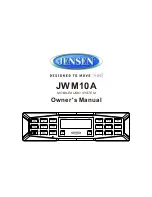
BASIC KNOWLEDGE OF WELDING
6) Arc Extinguishing
Arc extinguishing is unavoidable during welding. Poor arc extinguishing may bring shallow weld craters and poor density and
strength of weld metal by which cracks, air holes, slag inclusion, and shortage the like are easy to be produced. Gradually pull the
end of the electrode to the groove and raise the arc when extinguishing the arc, in order to narrow the weld crater and reduce the
metal and heat. Thus, defects such as cracks and air holes can be avoided. Pile up the weld metal of the crater to make the weld
crater sufficiently transferred. Then, remove the excessive part after welding. The operation modes of arc extinguishing are shown
in Fig 23.
a) Arc Extinguishing at the Outside of Weld Bead
b) Arc Extinguishing on the Weld Bead
Fig 23 Arc Extinguishing Modes
7) Weldment Cleaning
Clean welding slag and spatter with wire brush and tools the like after welding.
Argon Arc Welding
General Description of Argon Arc Welding
Argon arc welding is a kind of gas shielded arc welding using argon as shield gas, and the process of argon arc welding is shown in
Fig 24. Tightly close protective layer is formed in the arc zone by the argon gas flow output from the torch nozzle. Thus, the metal
molten pool can be protected and separated from the air. Meanwhile, the filler wire and base metal are molten by the heat gener-
ated from the arc. After the liquid molten pool cools down, a weld bead is formed.
Fig 21 Three basic movement directions of electrode
1. downwards feed
2. move toward welding direction
3. transversely swing
Fig 22 Angles of electrode in flat welding
workpiece
electrode
welding direction
electrode
workpiece
welding direction
38
Summary of Contents for CT2050
Page 55: ...15 WIRING DIAGRAM 52 ...
Page 56: ...www YesWelder com V2 01 ...
















































